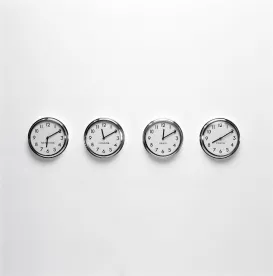In response to a petitioner’s request for rehearing of a decision denying institution of an inter partes review (IPR) proceeding, the U.S. Patent and Trademark Office’s Patent Trial and Appeal Board (Board) reiterated that any litigation asserting the patent at issue, including pre-America Invents Act (pre-AIA) litigation, operates to trigger the time bar under 35 U.S.C. § 315(b). Apple Inc. v. VirnetX, Inc. and Science Applications International Corporation, Case IPR2013-00348 (PTAB, Feb. 12, 2014).
Petitioner Apple requested an IPR on three grounds of review. In its preliminary response, VirnetX argued that Apple was served with a “complaint” under the ambit of § 315(b) by way of a litigation initiated by VirnetX in August of 2010, and thus Apple was barred from seeking IPR in June of 2013.
In its petition, Apple acknowledged the 2010 litigation involving the patent-at-issue, but concluded that the litigation did not foreclose the requested IPR because of a subsequent litigation brought by VirnetX against Apple in December of 2012. According to Apple, its conclusion was “compelled by the plain language of § 315(b)” because the statute does not specify a one-year deadline running from the date of “the first complaint” but rather the statute describes the time bar as being more than one year after the date on which the petitioner, real party in interest or the privy of the petitioner is served with “a complaint” alleging infringement of the patent. Thus, according to Apple, “a petition filed within 1 year of the date of any complaint alleging infringement of the patent is served on a petitioner is timely under the plain statutory language of § 315(b).”
The Board denied institution of the IPR proceeding, noting that the 2010 litigation asserting the patent-at-issue qualified as “a complaint” under the plain meaning of § 315(b). The Board explained that it is well-settled law that, in the absence of a clearly expressed legislative intent to the contrary, the plain and unambiguous meaning of the words used by Congress will prevail. The Board noted that the timeliness limitation of § 315(b) does not apply to a request for joinder under § 315(c) and, further, that Apple had filed a motion to join the IPR proceeding with a subsequent IPR filed by a third party. As that other proceeding had been terminated at the request of its petitioner, the Board dismissed Apple’s motion for joinder.
Apple subsequently filed a request for rehearing of the decision on institution. Taking up the rehearing request, the Board observed that Apple had introduced a number of new arguments in support of its position, including that § 315(b) was ambiguous, a position that was contrary to Apple’s initial argument in its petition that the Board should follow the plain meaning of statute. Additionally, the Board observed that Apple’s argument that Congress had intended IPR to apply only to concurrent litigation was supported only by selective segments of the AIA’s legislative history and was undone by the fact that Congress created an express exception to the time limit of § 315(b) via the joinder provisions of § 315(c).




 />i
/>i

